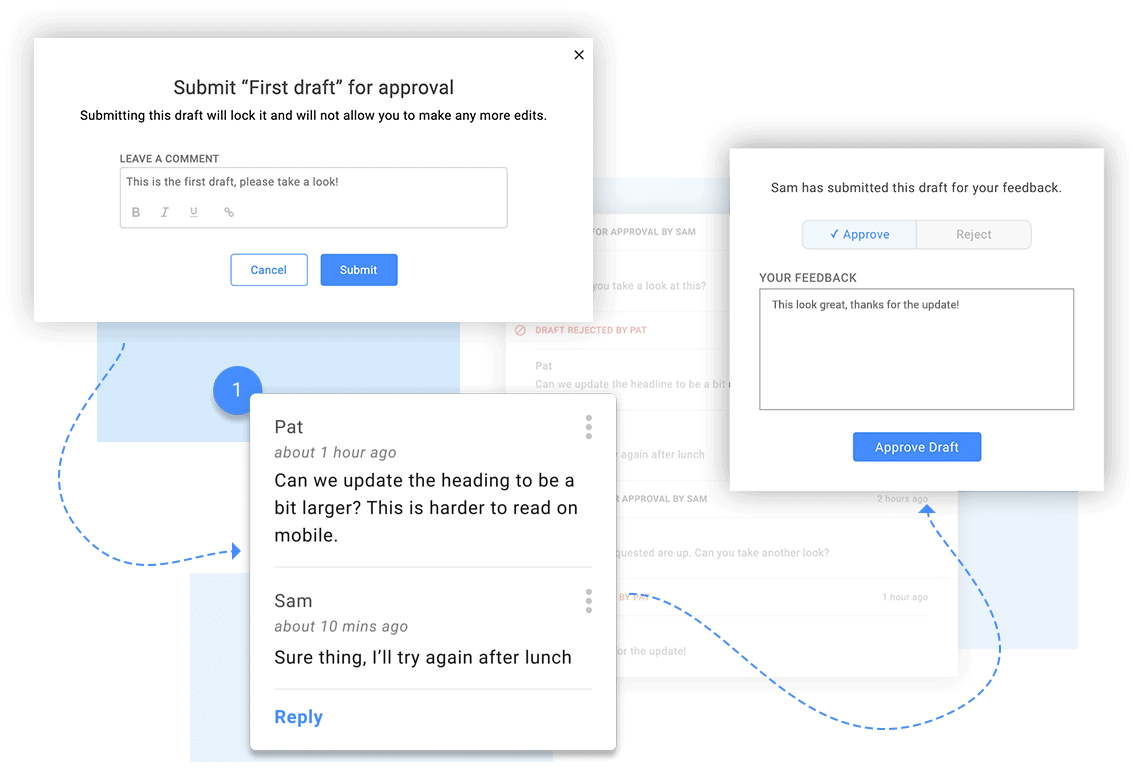If you’ve worked with almost any email builder out there, you’ve felt the pain. You may have even spent hours trying to fix a line of code to make your emails look perfect yet still have accidentally sent an email with a placeholder like “Hi ” instead of the recipient’s actual name.
There are so many aspects of email marketing that can have pitfalls and take away from the actual marketing. If we described the perfect skill set for an email marketer, it might look something like:
- Copywriting expert
- HTML expert
- Conversion optimization expert
- Marketing expert
- Design and branding expert
It takes all of these skills combined to win at email marketing, so there needs to be a way to facilitate collaboration between all of them to put your brand’s best foot forward.
The reason the email production and marketing landscape is this way is simple: the current email tools have evolved over time, but not with the modern email manager or marketer in mind. Marketers don’t code, they create. And to create something amazing they collaborate with other experts to come up with the best ideas to serve their audience.
Today, there are thousands of frustrated people working with inadequate email tools for various reasons. Resulting in lots of time wasted, and extra resources spent, and below average results. It’s time to solve the email management problem.
Email Management – Current Challenges
Coding required often
Many of the solutions out there for email marketing involve at least knowing the basics of HTML and being able to go directly into the code and tweak things to make updates to the email template. If you don’t have HTML for email coding experience, you’re likely to get stuck needing some help on something minor.
Email production – Device, provider, and usability testing
Many of the email platforms popular today are not compatible with all devices and all email clients (to be fair, it’s a hard thing to achieve). Today, it’s critical to be able to quickly and easily send test emails to check for functionality, personalization, mobile responsive content, as well as UX. Most popular platforms don’t produce accurate renderings, leaving you to cross your fingers and hope your email looks good to everyone who see’s it.
Collaborative environment
Collaboration is something that almost didn’t exist at all years ago in email production and now is crucial to how people work. Even relatively small teams working together on email campaigns struggle to streamline decision making and collaboration across multiple tools. When you have the email copy in a google doc, and the design in a Figma file or PDF, collaboration is hard and often results in crossed lines of communication due to limited visibility and multiple people working in multiple documents.
Email management like a CMS
Being able to produce emails in a system that acts as CMS for email management can often be the difference between time wasted and company revenue. Streamlining your process and gaining operational efficiency for email production is a game changer and saves you $$$.
Time – the ultimate resource
Antiquated email production processes are wasteful, because having to go through each line of HTML or move around in a software that is not built for users with low coding knowledge takes time. Emails aren’t something brands can afford to get wrong, they have to look and feel perfect or your readers will ignore or delete your email.
Errors, bugs, & customer loss
We’ve probably all sent an email with the wrong merge tag in it, sometimes even in the subject line. Often email production gets rushed QA because of the difficulty in sending test emails, or overall bad UX in the email software. This can lead to customer loss in addition to public embarrassment (think brands with sensitive customer information).
Getting it right – Email Production Tech Stack Checklist
Brand consistency
If your brand’s email production team is spread out across content writers, developers, translators, designers, and marketers, brand consistency is tough to get right. Make sure you’ve got a tool, like Dyspatch, that ensures you can easily check for brand guidelines and style guides right inside of the tech. There should only be one source of truth.
Scale
- Find a platform that will scale as you scale your business. Whether that’s by accommodating teams in other markets, or facilitation internationalization and localization, think ahead. Find a tool that will still fit your goals five years from now and beyond.
- Your email production platform must double down your team’s skills, and make up for the areas that aren’t your core competency. Not all marketers are design experts, so it’s best to find a platform that can guarantee on-brand emails every time. Similarly, not every marketing team has expert email HTML coding experience available, so it’s imperative that their email production tool can provide the same quality of email they require without forcing them to find coverage for the coding part.
- Scale your reach to customers with an email builder that offers you access to new email marketing techniques you haven’t tried yet. You should be able to experiment with image carousels, coupons and countdowns, but also explore what AMP for email can contribute to your conversion metrics.
Flawless approval processes
Remember those email chains that went around to numerous different people and departments all trying to approve an email before sending? Now imagine sending dozens of emails at a quick pace. Nightmare-ish!
Make sure you have an effective way of collaborating with all stakeholders that will allow for scale as you increase the number of emails you send. A solid foundation is crucial before you attempt to scale your email efforts, or production can get messy very quickly, resulting in bad user experiences and missed revenue opportunities.

Testing
Don’t treat testing like an afterthought just because it’s hard. In Dyspatch, you can use Litmus, which is built into Dyspatch, to test your emails. Litmus is a world class email testing tool, so you can rest assured that you will get accurate previews.
Reliable builder
Use a builder that is easy to use and you can trust. A user friendly, drag and drop builder that leverages modular design allows you to re-use previously created content blocks, saving you time and effort in recreating something from scratch. It also helps to maintain brand consistency, and standardize the look and feel of every template, regardless of what users are working on email. Check out Dyspatch to learn more.
Dark mode
You can learn everything you need to know about dark mode here. Bottom line, it takes some careful planning to not end up sending high contrasting, awkward email visuals.
Simple UX testing
One of the biggest problem areas in email production are visual and ux or interaction testing. Brands that send pixel perfect emails that work when their audience interacts with them are obsessed with UX testing. Make sure your email production system has this capability or risk mistake-riddled emails.
AMP for Email support
As the world moves towards a majority of mobile email usage, fast loading, clean coded emails win the day in interaction and response. AMP readiness is critical to maximize email performance metrics.
Becoming ready to send AMP for Email isn’t difficult, here’s our guide to getting started with AMP.
Email technology is evolving, and using outdated technology can harm a brand’s email communication, sales, and everything in between. Thankfully, new solutions are here, and can change the way we do email at scale and quality. Check out our webinars for everything new happening with email production.
